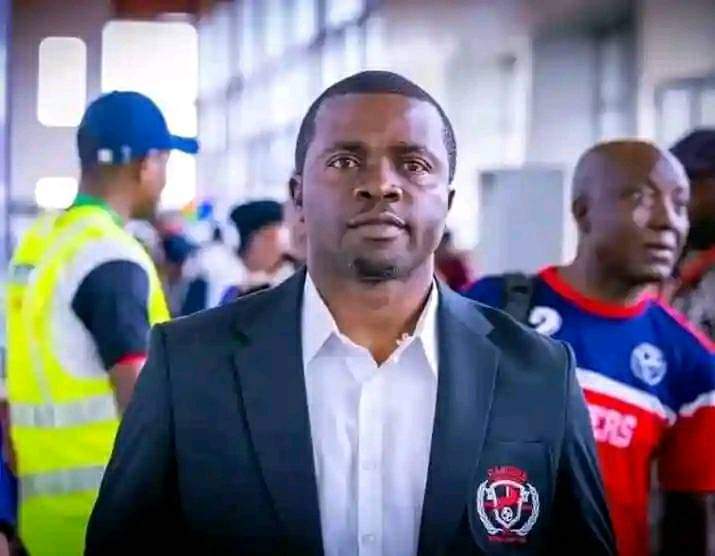Lawsuit alleges historic sexual assault by Hamilton educator
John Dunford sat at the back of the church, listening to the eulogy.
Oh, how he hated the deceased.
This was in 1995, at Canadian Martyrs Roman Catholic Church in west Hamilton.
Dr. James (Jim) Anderson, 69, had been an anthropologist and the first chair of McMaster University’s anatomy department, and a founder of the medical school.
Known for his intellect, charisma, and offbeat sense of humour, in the early 1970s he created “Cool School,” an alternative for Hamilton teens who struggled in conventional classrooms and in life.
Dunford, a Cool School student in 1982-83 — “an intellectually gifted young man,” Anderson wrote of his pupil — wasn’t sure why he attended the funeral for a man who continued to haunt him.
For years, he had played it back in his mind, often while drinking and staring into space, burning days and nights.
What should he have done? Had it been his own fault? Was Anderson a victim, too?
Dunford had contemplated suicide. He had read the works of Friedrich Nietzsche, and agreed with the German philosopher that the thought of taking one’s life offered consolation, helping “through many a dark night.”
And then one day, he decided to take his demons, and the departed, to court.
“Looking back, I could feel Dr. Anderson’s attraction to me from the start,” Dunford says. “He told me he liked hairless. I had no chest hair. Even now I still can’t shave.”
Sitting for an interview in a coffee shop, Dunford pulls down the collar of his shirt to reveal his pale lower neck and upper chest.
His candour feels jarring, but at 60 years old, having told his story to loved ones and lawyers, perhaps he has no time for subtleties.
Dunford is pursuing a $2.85-million lawsuit against Hamilton Health Sciences (HHS), holding the corporation liable for two alleged sexual assaults by Anderson.
Long-standing, “historic” sexual assault claims are not unusual, but Dunford’s allegations go back to incidents four decades ago.
Pretrial motions in the case are scheduled in July, and the trial is expected to begin in the fall.
All of the details in Dunford’s statement of claim are based on allegations not yet proven in court.
In its statement of defence, HHS “denies that any of the alleged assaults took place” and that if “any such conduct took place,” HHS is not liable. The statement adds that “no complaint of inappropriate conduct was made to the hospital by Dunford or anyone else.”
A spokesperson for HHS declined to comment for this story because the case is before the courts.
When he was 19, Dunford says he would drop by the stately Hamilton home of Dr. Anderson, who was called “D.A.” by Cool School students.
They would chat for hours, about philosophy and literature, drink Anderson’s fine Scotch and imported beer. Dunford marvelled at artifacts on display in the den collected from around the world.
Anderson gave Dunford his 1960s-era typewriter, as a gift.
This was all before a wintry night in 1983, when Dunford says Anderson changed the course of his life.
Forty years later, Dunford still has the typewriter. He’s not sure why.
Dr. James Anderson gave this old typewriter of his to John Dunford as a gift.
Photo courtesy John Dunford
Dunford grew up in the 1960s in the North End, near Barton Street East and Wentworth Street North. He was the oldest of five boys. A sixth boy died very young from cancer.
He says his father was a gambler who cheated on his mother and was not involved in their lives.
His parents separated. His mother, who had little education, raised the boys on mother’s allowance, and rented out rooms to boarders.
He has a memory from eight years old, of two of the boarders groping him in the house. Around that same time, he says he was molested in nearby Woodlands Park.
Dunford enjoyed reading, but couldn’t stay focused in school and failed Grade 7 at Gibson elementary.
“I wasn’t stupid; I read a lot but I was a juvenile delinquent, or that’s what they called me,” he says.
In 1977, at 14, he left Hamilton to live with his aunt and uncle in Nova Scotia, but moved back and forth several times.
That same year, Dr. James Anderson wrote a report for Ontario’s Ministry of Education about Cool School, a program he had founded in Hamilton six years earlier.
The concept was offering an option for teens who did not respond well to conventional classroom learning, by employing an informal, self-directed learning structure, and helping them function “as their own teachers.”
Anderson had drawn upon methods he helped develop in the 1960s at McMaster’s medical school.
Along with program co-ordinator Ted Ridley, Anderson wrote in the report that Cool School was for youth “immature in attitude,” some of whom “habitually drug themselves or drink to the point of blotting out reality,” and may have had a criminal record, or “made half-hearted or sincere attempts to depart altogether from life.”
The report added that many of the students “have not enjoyed ideal relationships with their parents” and that 28 per cent enrolled at one point had “a record of one or more convictions for juvenile or criminal offences.”
Anderson had tutored “troubled youth” in his home, before Cool School opened in a building at Chedoke Hospital on the Mountain. (Chedoke-McMaster Hospitals merged with Hamilton Civic Hospitals to form Hamilton Health Sciences in 1996.)
In the first four years of the program, 15 Cool School graduates were accepted by universities. By 1977, the program had 55 students enrolled, with four full-time teachers — called tutors — in addition to volunteers.
He moved to Hamilton after joining McMaster’s medical faculty in 1967.
Anderson volunteered with the Boy Scouts of Canada, and established a clinic for youth in Burlington who had drug abuse issues.
He received Hamilton Citizen of the Year honours in 1975, in part for his work with Cool School. An article in The Hamilton Spectator noted that Anderson, then 48, would sometimes post bail for youth facing drug offence charges, stand up for them in court, and “make midnight house calls in the dingy alleys and backrooms frequented by young drug users and kids in trouble.”
A headline in The Spectator called him the “druggies’ doc.”
Anderson was quoted saying he was “not a high-profile public figure” and so the honour “makes me a feel a little bit like the unknown soldier.”
This photo of Dr. James Anderson (that includes editing markings) was published in The Hamilton Spectator in 1975, when he was named Citizen of the Year, in part for his Cool School initiative, and work with teens with drug abuse issues.
Courtesy Local History and Archives, Hamilton Public Library
Dunford performed better in school living with family out east.
His uncle, an artist, turned him on to Nietzsche, and the German novelist Hermann Hesse, whose stories featured coming-of-age themes and the “search for authenticity, meaning, and the spiritual life.”
In the fall of 1980, at 17, Dunford had returned to Hamilton, and was attending Sir Winston Churchill high school and living at a youth home called Webber House.
He was also drinking, and breaking house rules staying out all night.
A friend in Cool School suggested Dunford arrange a meeting with Dr. Anderson.
Dunford says he met with Anderson in his office at Chedoke Hospital. Anderson was head of the school and a tutor.
“He wore glasses, and a jacket and tie,” says Dunford in an interview. “He smoked, had white hair, a comb-over … He seemed gentle and kind, and really listened to you.”
Dunford told Anderson that he had read Hesse extensively.
“He was impressed; Hermann Hesse was D.A.’s hero … Cool School’s (philosophy) was based on Hesse and his book ‘The Glass Bead Game.’”
(The novel is a futuristic tale about a “gifted, parentless schoolboy” who is selected for an elite education system and then rises to greatness.)
Dunford says that during the meeting, Anderson grabbed and twisted his nipple as a greeting of sorts.
“He ‘purple nurpled’ me that first time. I hated it. He acted like he was playing around, giggling: ‘I gotcha.’ He did it to other boys, not just me. I saw it in the (school) hallway. I didn’t like it and I made that clear to him, and he stopped it.”
Mark Boardman, a Cool School student and friend of Dunford’s, told The Spectator the nipple grabbing was a “well-known” habit of Anderson’s, but he never experienced it himself.
While not referencing groping, Ridley told The Spectator in an email that he recalls “occasional instances of jocular and consensual roughhousing” at Cool School, “which, given the relaxed and informal culture of the program in that era, didn’t appear inappropriate or to have a sexual connotation.”
Teenage John Dunford, when he worked at McDonald’s in Nova Scotia, soon before he moved back to Hamilton to attend Cool School, an alternative education program for teens founded by Dr. James Anderson.
Photo courtesy John Dunford
Dunford moved back to Nova Scotia, where he worked at McDonald’s, read the works of Russian novelist Fyodor Dostoevsky, and entered a short story contest.
When he received positive feedback from the contest judge, he gained confidence.
He phoned Anderson in the spring of 1982.
“Dr. Anderson said, ‘what are you doing (out east)?’” says Dunford. “He told me, ‘if you can find your way back to Hamilton, I’ll admit you to Cool School.’”
He turned 19 that April, and entered Cool School in September 1982. Anderson was his tutor.
Anderson introduced him to a program graduate who was attending McMaster University, and writing his PhD on Soren Kierkegaard, the existentialist philosopher.
Dunford was impressed. He decided he wanted to be a philosophy professor.
Cool School had moved to a building on King Street West, near Queen Street South, leasing two floors from the owner, the Sisters of St. Joseph.
Dunford lived in a small apartment on MacNab Street South. Soon he was dropping by Anderson’s house about 10 blocks away, at Herkimer Street and Bay Street South, where Anderson lived with his wife.
John Dunford says this was Dr. James Anderson’s home, at Herkimer and Bay Street South.
Photo courtesy John Dunford
Dunford was not the only student who dropped by Anderson’s house in the 1980s. Another was Richard Heinzl, a McMaster medical student who founded the Canadian branch of the humanitarian organization Doctors Without Borders.
“Here was this guy (Anderson) who was this towering professor, utterly respected, and yet you could develop a true friendship with him,” Heinzl told The Spectator in 2008. “You could knock on his door at midnight and he’d be up there working in his study. He’d welcome you, and you’d sit down and have a beverage with him and just start talking about the world.”
In the fall of 1982, Dunford had pneumonia, and says Anderson visited him, examined his chest with a stethoscope, and gave him gifts: books that he had signed, and the typewriter.
When Dunford was better, Anderson continued to visit the apartment, bringing sake (rice wine) with him. They drank and read poetry.
“I was so happy this brilliant man was taking an interest in me,” Dunford wrote in a letter to a lawyer, years later. “I went to his family’s Christmas dinner where other brilliant people attended.”
In February 1983, two months shy of his 20th birthday, Dunford says he got drunk with Anderson at the house.
It was snowing outside, and Anderson drove him home.
“It was there, in my apartment, he kissed me,” Dunford wrote. “I froze. I didn’t know what to do. He told me he was in love with me. That he had an unhappy, sexless marriage … A lot of thoughts went through my head. This man, I believed, held the key to my future.”
The statement of claim says Anderson performed oral sex on Dunford, and that Dunford “was forced to reciprocate.”
“I felt incredibly guilty,” Dunford wrote. “I was really confused and afraid. Not physically afraid, just generally afraid for the future.
About two weeks later, he says, upset at what had happened, he visited Anderson, planning to tell him how he felt. Instead, they drank and Anderson performed oral sex on him, but Dunford “managed to refuse to reciprocate,” says the statement of claim.
“I told Dr. Anderson that this couldn’t happen again,” he wrote. “That it bothered me. That I wasn’t gay and didn’t like doing this … I was really upset with myself. I couldn’t believe I allowed it to happen a second time.”
The claim says Dunford felt “confused, fearful, shameful, guilty, and complicit.”
He had felt like Anderson was a father figure to him. He believed Anderson was a genius.
“I loved Dr. Anderson — platonically,” Dunford wrote.
Twice over the next five months, he says, he visited Anderson and talked about his final school paper, while behaving coldly toward him.
“I began to hate him, and he knew it,” Dunford says.
Dunford barely attended class the last month of the program. And then, in a letter dated Aug. 31, 1983, on Chedoke-McMaster Hospitals letterhead, Anderson recommended Dunford be admitted to university based on his Cool School performance.
(In its statement of defence, HHS asserts that Cool School officials had “no knowledge” that Anderson was ever Dunford’s teacher or tutor, or that Dunford visited his home, adding that Dunford was a “non-materializing candidate who was discharged from the program in July 1982.”)
Under the heading “Letter of Equivalency,” Anderson noted that Dunford, “always a prolific writer,” had read 59 books, “including the works of Hermann Hesse,” and written an essay on existentialist philosophy.
He concluded: “This intellectually gifted young man has demonstrated his ability to enter and succeed in a University program. He has the equivalent of Grade 13.”
Dunford says he was accepted to enter McMaster University that fall.
“That’s how good his word was.”
The letter written by Dr. James Anderson recommending John Dunford be accepted to university based on his Cool School performance.
Photo courtesy John Dunford
He squandered the opportunity.
Dunford would sit under an oak tree on campus, brooding, wondering if he was there because he had provided sex for Anderson.
He was living with his girlfriend, whom he had met at Cool School, but didn’t tell her his story. He didn’t tell anyone.
He was drinking more, and smoking pot each day.
He dropped out before Christmas.
Not long after that, he pursued a career in journalism, and was hired to write stories and editorials for community newspapers in Stoney Creek and Dundas.
In 1990, Dunford heard that Cool School was about to close.
It was around this time he told his story for the first time, to his friend Boardman.
Later, he told his teenage cousin, Mary Dunford, who had also attended Cool School.
“Very few things can affect the core of a man like something like that,” she told The Spectator.
With Anderson dead, and no longer able to imagine himself one day confronting him, Dunford’s struggles worsened.
His newspaper colleagues viewed him as a “troubled” person, and he knew it.
He lacked confidence, could not trust those in authority, and feared men generally.
“I had a really nihilistic attitude that I didn’t try to hide … I was a real mess between 1995 and 1999.”
He left his girlfriend. He took a leave from work and barely ate. He says Boardman showed up at his door one day in 1997, and found him “emaciated” from weight loss.
“Mark took me over his shoulder to the hospital.”
He was admitted to St. Joseph’s Healthcare, and to Homewood Health Centre in Guelph for six weeks of post-traumatic stress disorder (PTSD) treatment. He says he was diagnosed with depression and general anxiety disorder. He attended Alcoholics Anonymous.
He says some of his caregivers minimized his experiences with Anderson.
“It was like, ‘(Dunford) was 19 at the time, he was an adult.’ That’s what it felt like.’”
He began dating a woman he had met at Homewood. The relationship did not last — “I have ruined every relationship” — but they had a son.
He says fatherhood made him less self-absorbed, ended the suicidal thoughts, and motivated him to go public with his allegations.
He says he took legal action to ensure his story is on the record and to hold Anderson accountable after all these years.
The claim says the long-term mental health impact from the alleged assaults caused Dunford to “develop certain psychological mechanisms in order to survive … (including) denial, repression, disassociation, and guilt,” and that it contributed toward a “loss of income … loss of earning capacity … and enjoyment of life.”
He filed his claim in 2013, but the action was dismissed in 2018, due to delays filing motions by his first lawyer.
John Dunford is pictured recently at his west Hamilton home. Dunford has filed a $2.8-million lawsuit against Hamilton Health Sciences (HHS), arguing that HHS should be liable for two alleged sexual assaults by Dr. James Anderson against him in February 1983, when Dunford was a student of Anderson’s at Cool School, an alternative education program for teens. Anderson died in 1995.
John Rennison
His current lawyer, Michael Wilchesky, has represented clients in sexual abuse and assault “vicarious liability” cases for 12 years. He suggested it’s not unusual for a court to find a school board, for example, liable for the actions of a teacher who is deceased.
He added that damages awarded by courts in such cases have grown in recent years.
Wilchesky told The Spectator the court must decide if “it is just and equitable” for (HHS) to be held liable for the harm Dunford says he suffered.
The unusual nature of Dunford’s case, he suggested, is that Cool School was not operated by a school board, nor was it a corporate entity.
“So we are left with the hospital,” says Wilchesky. “The hospital is saying, ‘we had nothing to do with (Cool School),’ but we say they are responsible because all signs pointed to the hospital operating the Cool School; it operated on hospital grounds through their adolescent development unit — that Dr. Anderson headed — and payments to Cool School staff were made through the hospital. Cool School documents were on hospital letterhead, students applied to attend and were admitted through the hospital’s usual intake process … And these were extra vulnerable kids, with family problems, who couldn’t complete high school.”
Wilchesky plans to call witnesses at trial, including former classmates of Dunford’s.
When asked by The Spectator if he is aware of additional claims filed against Anderson in the past, Wilchesky said he was unable to comment.
Ridley, the Cool School program co-ordinator, told The Spectator that he is “surprised and troubled” to hear of Dunford’s allegations, and added that he would have “followed up and reported the situation appropriately” if he had been made aware of them. “In my experience, students were comfortable approaching me, or other staff, with concerns of any sort, including mistreatment, confident they would be treated seriously, and their issues addressed.”
Tony Hansen worked as a summer student in Cool School in 1979, and as a student teacher in the program in the early 1980s, attending staff meetings where Anderson was present.
He told The Spectator that in his experience, Cool School was “a joyful place,” and the allegations against Anderson “don’t fit” with the person he had experienced.
“(Anderson) was helpful, wise and kind,” he says. “He had a wicked sense of humour, and an infectious laugh. He could act like a kid at times; it wasn’t unusual to see him discuss Dante’s ‘Inferno’ and Hermann Hesse one moment, and race down the hallway with a squirt gun the next. But he was clear on his expectations and when it was time to work … He was definitely a father figure to some of the students.”
One week after Anderson’s death, Cool School tutor Anne Snider wrote in The Spectator:
“Jim Anderson recognized the incredible opportunity provided by the uncertainty of adolescence … He offered kids respect, self-direction and a world of exciting ideas. They loved him for it and excelled because of it. Many went to university or other creative endeavours. Few were untouched by the magical door he opened for them.”
Hamilton Spectator obituary story about the death of Dr. James Anderson in 1995.
Courtesy Local History and Archives, Hamilton Public Library
The last time Dunford spoke with Anderson was in 1990, five years before his death.
He says he looked him up in the phone book, after hearing Anderson no longer lived in his family home.
He wanted to let him know how desperate his life had been since Cool School.
“I wanted to bring up a lot of things.”
Anderson answered the phone.
They engaged in small talk.
Dunford told him he had been writing for a newspaper.
“Oh, that’s good,” Anderson said.
“I just said, ‘talk to you later,’” says Dunford. “I wanted to bring it up, but I couldn’t.”
Instead, he returned to brooding.
“I would just sit and think, and for a long time I thought maybe he was a victim. I would make up excuses for him — like maybe he couldn’t come out as a gay man in the ‘60s, when he was establishing the anatomy school and medicine school. Maybe society forced him to repress his homosexuality.”
In the mid-2000s, Dunford started dating Laurie Kallis, a Hamilton artist.
Portrait of John Dunford painted by Hamilton artist Laurie Kallis, who dated Dunford in the early 2000s.
Photo courtesy Laurie Kallis
They were together 10 years. From the start, Kallis wondered what had happened in Dunford’s past that influenced his mercurial personality.
“John is a kind and decent person, but he could not deal well with stress or anything remotely like confrontation,” she says. “He was not very stable for many of the years we were together. He was never angry, not even when he was drinking, but if he got upset about something, he would disappear, be gone for a day, a week. And that’s when we lived together.”
One of those times, she went looking for him at a friend’s house.
“When I knocked at the door he opened it, broke into tears, and asked why it took me so long to get him.”
Eventually, he told her about his past.
“It came out in pieces,” she says. “It was very painful for him to reveal his experience.”
Kallis says Dunford struggled to understand that “he didn’t do anything wrong, and to forgive himself.”
“I blamed myself for a long time,” says Dunford. “I still do.”
He says he has been sober for about nine years, and has a relationship with his son, who is now 21.
In the letter Dunford wrote to a lawyer in 2007, he said his memories of Anderson were “not ‘recovered’ … it’s exactly because I can’t forget that I’ve had so much trouble in my personal life.”
But he says he has learned to focus less on the past.
He says he hopes his story will help others with relatable experiences not feel as alone, but also believes he will be criticized for targeting Anderson, given the man’s reputation, and that he can no longer defend himself.
Dunford still has the books that Anderson gave him, and as for the typewriter, he wonders if he will destroy it, once the case is over.
Symbolically, that might close the chapter of the story that began the day Dunford wrote that letter 16 years ago, laying bare his feelings.
At the end of the letter, he channels the words of Nietzsche, and perhaps Dunford is subconsciously referencing himself, when trying to account for the man he had loved, and then despised.
“I wonder about so many things,” he wrote. “What a tragedy, for both of us. Dr. Anderson was all too human, I guess.”







